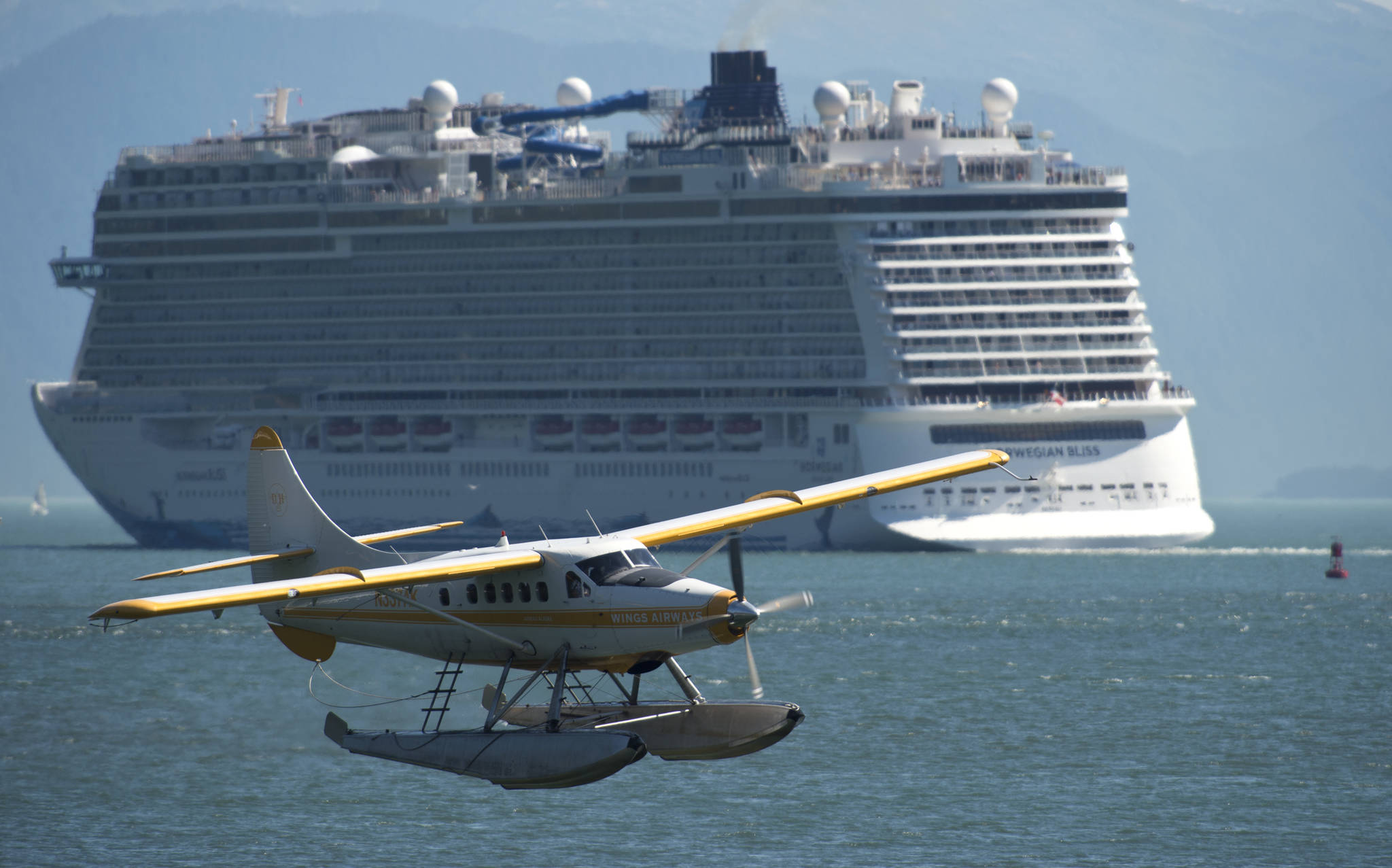Juneau is witness to an awful lot of air traffic.
Between commercial flights, helicopter tours and floatplane traffic, Juneau International Airport can get more than 1,000 arrivals and departures, both rotary and fixed wing, in a single day, said Rob Swinton, an air traffic controller and local representative for the National Air Traffic Controller Association. Between the local conditions and the level of traffic, Swinton said, that can be quite a job.
“There’s tons of aircraft operating in the vicinity of Juneau,” said Joe Sprague, CEO of Wings Airways.
Creating order from the chaos is an all-hands effort. To deal with that, the flight operations companies and the FAA have attacked the issue from several directions. One is applying technology, which the air control tower does, allowing for quicker, better information. The other is procedure.
“To better manage that, the commercial aircraft operators have had a letter of agreement,” Sprague said. “We basically have set patterns that we fly and we don’t deviate from those patterns.”
Agreed upon by all commercial operators with help from the FAA, the letter of agreement is a public document lining out all the procedures to be followed by all aircraft in the vicinity of Juneau, as well as other popular destinations in the region. In a year that’s been especially bad for floatplane crashes, this is one facet of a plan to keep planes, pilots and passengers operating safely.
“The one thing that I really do believe is unique about Juneau is the collaborative nature of the different operators in Juneau is really strong,” Sprague said.
The agreements cover such things as who flies where, at what altitude and in what direction. It also covers approach angles and procedures, radio frequencies and a thousand other details essential to running a crowded, complicated airspace.
Juneau Youth Services to close Cornerstone youth shelter
“It’s a very defined, very precise plan,” Sprague said.
The air traffic controllers themselves have one of the busiest jobs of keeping all the flights coming and going organized. Any flight within a certain perimeter of the airport is required to radio the tower.
“Your typical busy summer day will see four to five controllers in the tower at a time working in concert with each other to keep the airport running smoothly,” Swinton said.
Other issues for fliers around here are more local problems. The geography of the airport makes radar, which relies on line of sight operation, a nonviable option. Swinton says they work around this, using other technology to replace the capability that radar would give them otherwise. The other issue something more obvious and relatable for everyone.
“I would say that our biggest challenge, in addition to the terrain, would be weather,” Swinton said. Juneau’s unique geography and climatic conditions create fast moving and fast changing weather conditions from valley to valley. This can lead to disaster, as fliers in Alaska have learned time and time again. Training also helps ameliorate this problem, said Swinton.
Altogether, flying around Juneau isn’t easy, especially with the crowded airspace and frequent weather issues. But with technology and rigid procedure, the FAA and the local operators make it work, and make it work well.
• Contact reporter Michael S. Lockett at 523-2271 or mlockett@juneauempire.com.

